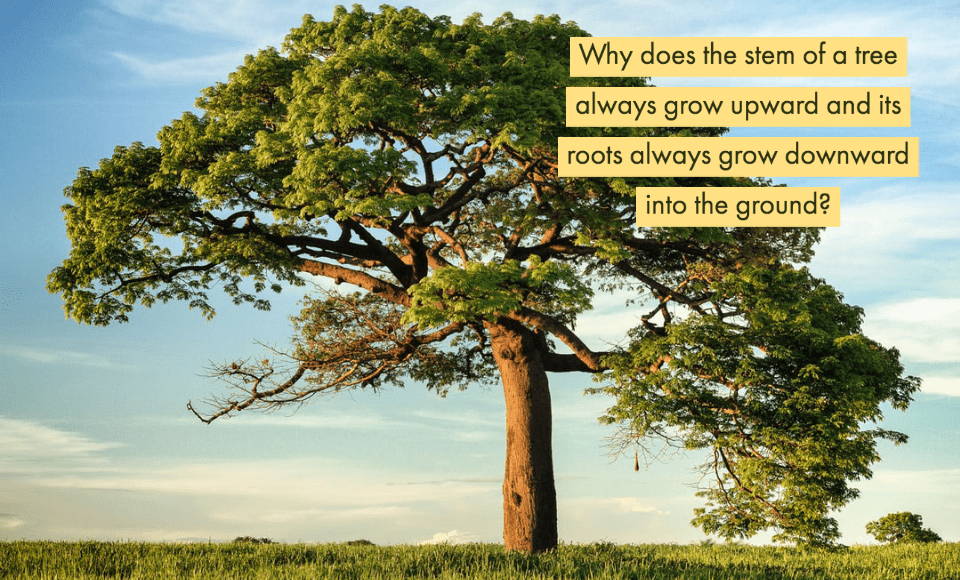Can you imagine if trees grow roots upward, and stems, downward? That would look very peculiar, or the possibility is that soil will not be necessary for the plants to grow because the roots get nutrients from it.
Geotropism or gravitropism is the reason why plant roots grow downward, and stems grow upward. It came from the words “geo” meaning Earth, and “tropism” movement of plants triggered by a stimulus. Gravity acts as the stimulus of the plant’s growth and movement. Roots growth downward towards the Earth is called positive geotropism,
while the stems’ vertical growth upward is called negative geotropism.
What makes geotropism happen?
The different parts of the plants grow in different directions according to their function and needs. The roots are necessary to grow downward and hold to the ground to provide stability for the plant, as well as gather all needed nutrients and water for the plant’s growth. Meanwhile, the stem needs to grow upward where the sunlight is available for the plant to be used in photosynthesis, or in making their food. But how do plants parts know which way to grow?
Although plants don’t have brains, they have organelles called statoliths that settle at the bottom of their cells to help the plant sense gravity. With their hormone called auxin, growth and elongation are stimulated in plant cells. This statolith acts like brains that signals were to grow a particular part of the plant to grow. (click here for more details)
The upward and downward growth of the plant’s parts is constant and unchangeable. Even if you turn the plant sideways, or upside down, it will still grow roots down and stems up. The reason for this comes from the nature of a plant and its general response to gravity.
The movement of water, nutrients, and other minerals in a plant is another example of geotropism. This transport is facilitated by Xylem and Phloem, which either moves substances either up or down.
The xylem and phloem are closely related and are usually found right next to one another. Transporting of water and other dissolved compounds from roots to the stem and leaves is performed by xylem. On the contrary, phloem is responsible for transporting food produced from photosynthesis from leaves to non-photosynthesizing parts of a plant such as roots and stems. (click here for more details)
How phloem works
Phloem is made from still-living cells called ‘sieve-tube members’ and ‘companion cells’ that transport essential sugars, organic compounds, and minerals around a plant. Due to gravity, the sap within the phloem travels between cells and works its way from leaves down to the roots. The sap is a water-based solution, sugar-rich made in the leaves through photosynthesis.
However, it’s not always that plants grow roots downward. The aerial plants are the exception because they have aerial roots. These roots grow above the ground or on other parts of another plant. Aerial roots function as anchors on woody vines, affixing the plant to supporting structures such as trellises, rocks, and walls. Just like ground roots, aerial roots also absorb moisture and nutrients.
Plants that live in swamplands have underground roots, but they can’t absorb gasses from the air. These plants produce above ground “breathing roots” to help them with air exchange. (click here for more details)
Aside from the stability and nourishment function of these roots, they also serve in air exchange and in propagation. There are aerial plants that, when you remove their roots, won’t cause harm to them. But in some cases, however, they are essential to the plant’s health and best left alone.
Epiphytes are mostly found in tropical areas as their ability to grow above ground level gives them access to the sunlight in densely shaded forests and exploits the nutrients from leaf and other organic debris that collects high in the tree canopy.
Most of the epiphytes are flower-bearing species, or the angiosperms, such as orchids, tillandsias, and other members of the pineapple family (Bromeliaceae). Mosses, ferns, and liverworts are also common epiphytes found in temperate regions. They obtain water from the rain and water vapor, although some absorb water with their roots despite their specialized leaves that can also take in moisture. They have narrow habitat requirements, and they rely on wind for the dispersal of their feathery dust-like seeds. (click here for more details)
